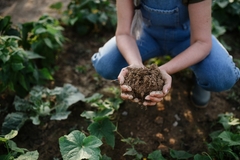Caramel: Valuable Brewing Ingredient
Advantages of using caramel – apart from its stability as a beer colour – include its ease of addition in metered volumes, its cost effectiveness compared to other colouring choices, and its unique flavour.

28/03/07 A valuable brewing ingredient for more than a century, caramel contributes to the character of beer on every continent. Caramel provides colour, flavour, and consistency in beer. It also has applications in a variety of related products including cider, shandy, and nonalcoholic malted beverages. Caramel, by weight, is the world’s most widely-consumed colouring ingredient in foods and beverages.
What is Caramel?
Caramel results from the controlled heat treatment of carbohydrates, typically glucose syrup. The glucose and food-grade catalysts are used to facilitate the browning process and provide stability. The finished beer caramel, a long polymer chain, is a positively-charged colloidal solution and thus stable in beer, which is also positive (because of proteins). Caramel is inert, physically stable when stored properly, and bacteriastatic if not totally sterile. In terms of product range, with increasing colour intensity, the hue of beer caramel will trend from pale yellow to reddish brown to gray brown.
Brewery Applications
Each brewery may have its own particular caramel application method; in general, brewers add caramel either at the wort boiling stage (if large volumes are required) or at the end to standardize colour lost in batch processing. Brewers can make small adjustments to final beer colour by caramel’s late addition, sometimes after final filtration, to ensure consistency of colour in the finished product. The dosage of beer caramel varies by type. Traditional ales contain 0.02% or more to add colour and some flavour character. Certain dark beers, including some stouts and bocks, may rely on higher caramel dosage. Lagers require minimal caramel amounts, typically less than 0.01% of the final beer, for colour consistency.
Brewing Advantages
Advantages of using caramel – apart from its stability as a beer colour – include its ease of addition in metered volumes, its cost effectiveness compared to other colouring choices, and its unique flavour.
Specialty Brewing Syrup Specifications
Brewing syrups are carbohydrate blends, usually glucose and sucrose, lightly boiled to contribute flavour and condition to finished beer. These “burnt sugars” range in fermentability from 60% to 92%. The syrups demonstrate an increase in sweetness with increasing fermentability. They can be used as kettle adjuncts where some residual sugars contribute mouthfeel and flavour after fermentation. Alternatively, if brewing syrups are added to traditional unfiltered beer at packaging, as ‘primings’ they can contribute condition (sparkle) to the finished product. In the case of pasteurized beer, the whole character of the brewing syrup passes into the finished beer to contribute palette fullness and some sweetness, depending on the adjunct used.















